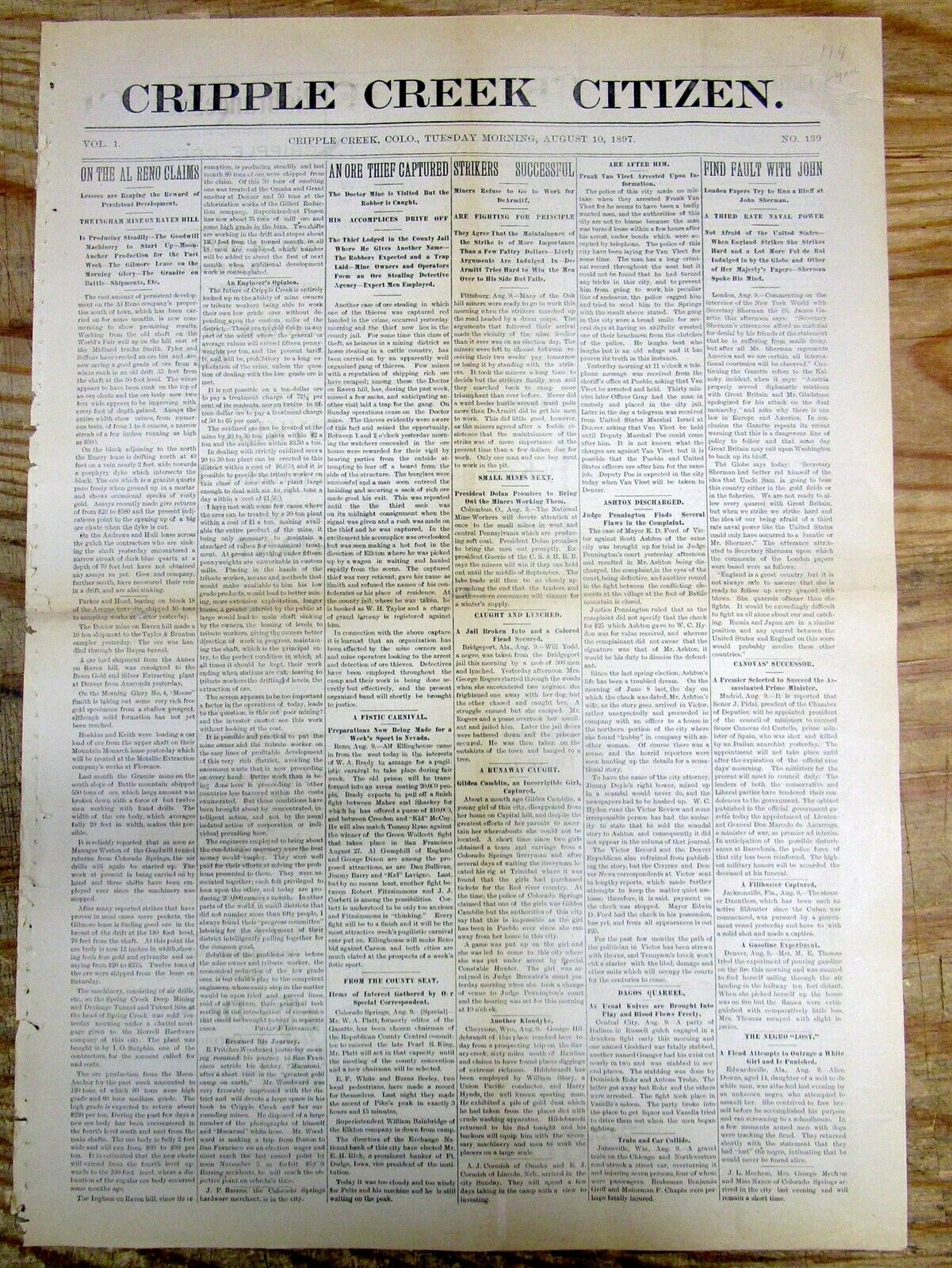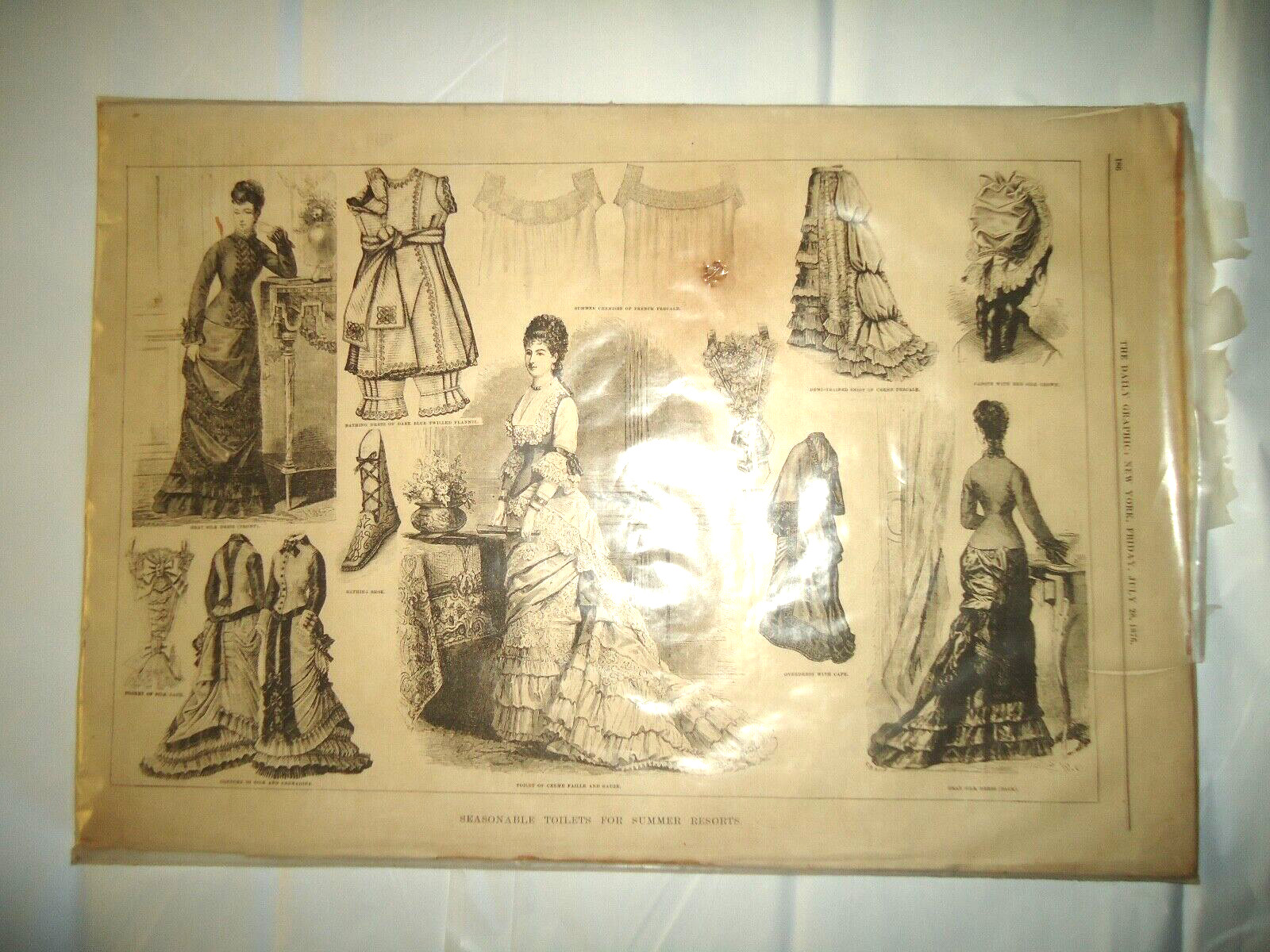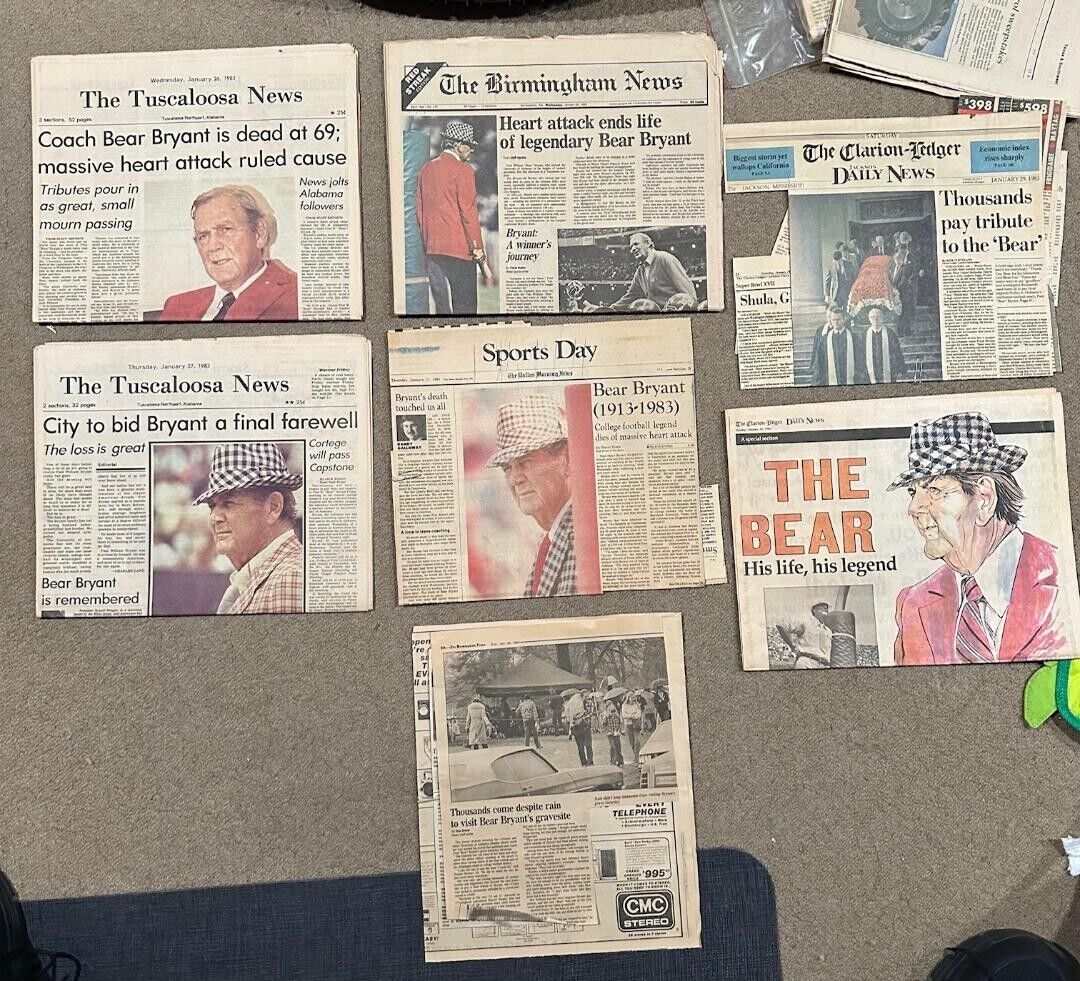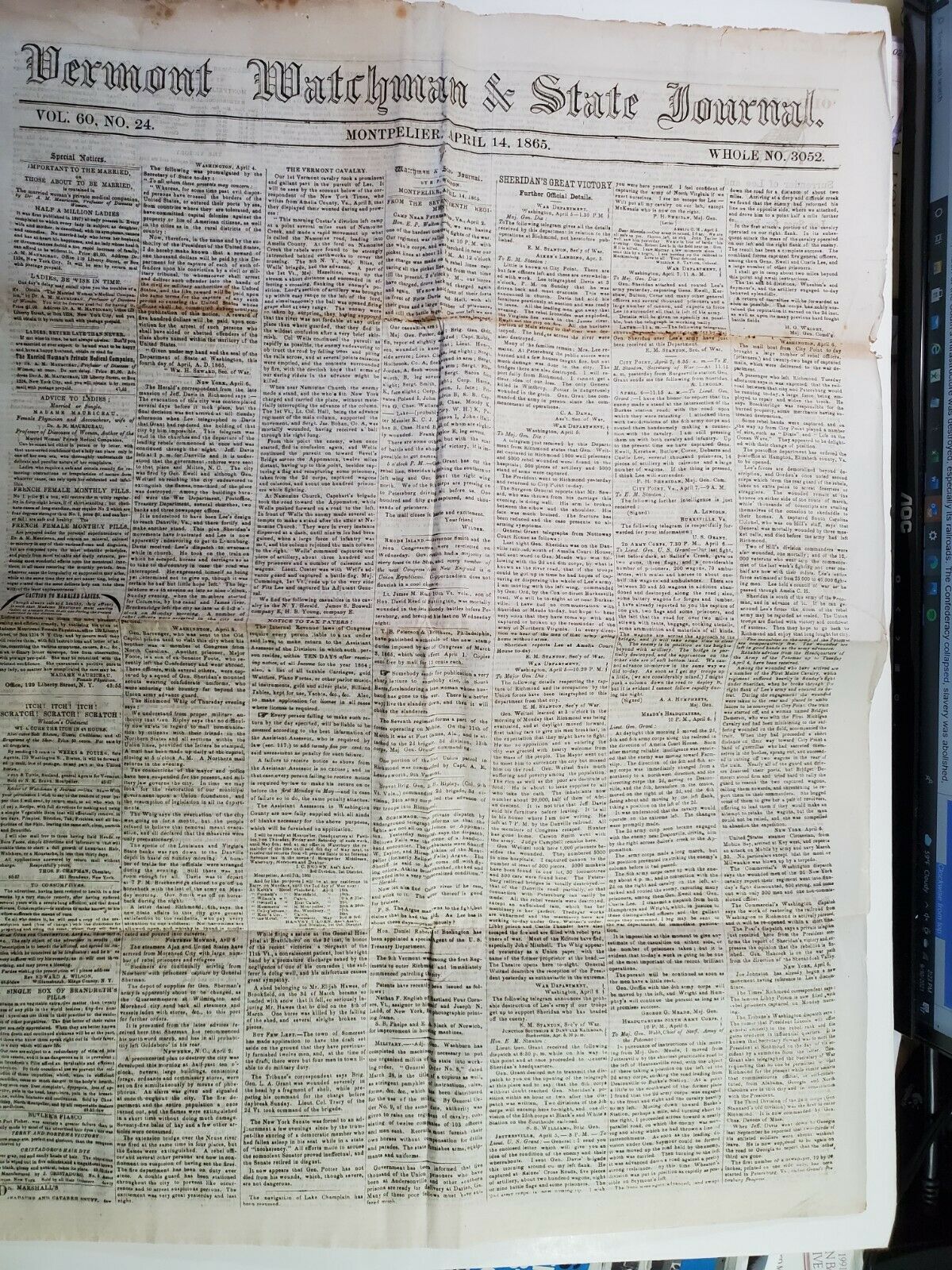-40%
1897 Cripple Creek COLORADO newspaper LYNCHING of a NEGR0 MAN Bridgeport ALABAMA
$ 18.48
- Description
- Size Guide
Description
1897 Cripple Creek COLORADO newspaper LYNCHING of a NEGR0 MAN Bridgeport ALABAMARare original 1897 Cripple Creek COLORADO newspaper with the LYNCHING of a NEGR0 MAN Bridgeport ALABAMA
- inv # 7P-225
Please visit our
EBAY STORE
for THOUSANDS MORE HISTORICAL NEWSPAPERS for SALE or at auction
SEE PHOTO(s) - COMPLETE ORIGINAL NEWSPAPER, the
Cripple Creek Citizen
(Cripple Creek, COLORADO) dated Aug 10, 1897. This rare early original Cripple Creek, CO newspaper contains a front page heading: "CAUGHT AND LYNCHED" with coverage of the LYNCHING of a NEGR0 MAN at BRIDGEPORT, Alabama.
Very rare
early Cripple Creek, CO newspaper. It contains national and international news as well as
LOCAL
news and ads from Cripple Creek, COLORADO from 1897, some 125 years ago
.
Bridgeport is a city in Jackson County, Alabama. Bridgeport developed after the 1840s, when European Americans established a riverboat landing here along the Tennessee River. This landing was a place for local farmers to trade their crops for other goods. Within a few years, a small hamlet known as "Jonesville" had developed around the landing, and included a trading post, gristmill, warehouses, and several saloons. The Jonesville post office opened in 1852.
Fluctuating river levels made riverboat trade unreliable, and area merchants began campaigning for railroad access in the late 1840s. The first rail line reached Jonesville in 1852. A railroad bridge over the Tennessee River was completed in 1854, connecting the city with Chattanooga, Tennessee. In recognition of this accomplishment, the name of the city was changed to "Bridgeport." Construction of a second rail line connecting Bridgeport with Jasper, Tennessee, to the north, began in 1860, but was not completed until after the Civil War.
Because of its location on both a rail line and the Tennessee River, Bridgeport was a strategic site during the Civil War. The rail bridge at Bridgeport was among those targeted by the East Tennessee bridge-burning conspiracy in November 1861. Although this attempt failed, the bridge would be burned twice during the course of the war.
Bridgeport was the site of a major skirmish on April 29, 1862, when Union General Ormsby Mitchel seized control of the city, and numerous other small actions over the following year as Confederate forces attempted to regain control of the area. The city was burned by Confederate troops under General Braxton Bragg in the Summer of 1863, but it was reoccupied by Union forces. In the latter part of the war, Bridgeport was the site of a major Union shipyard that built gunboats and transports for the Union Army. The USS Chattanooga was built here; it became a vital part of the famous "Cracker Line," which broke the Confederates' siege of Chattanooga in November 1863.
In the early 1880s, brothers Frank and Walter Kilpatrick, investors from New York, along with their father, Edward, established a lumber company in Bridgeport. Believing the city's location and resources had extraordinary potential for development, the Kilpatricks began buying up land in the area. Other investors became interested in the city, and in 1889 the Bridgeport Land and Development Company was incorporated. This company bought up land and laid out a new grid pattern for the city, which incorporated in 1891.
Frank Kilpatrick, who became the city's mayor, built a series of imposing Queen Anne-style houses on the street now known as Kilpatrick Row. Several factories, including a pipe works, stove works, rail car works, and planing mill, were built along the river. The rapid development of Bridgeport came to an abrupt end, however, with the onset of the financial Panic of 1893. Investors withdrew from the area, and the Bridgeport Land and Improvement Company went out of business.
Frank Kilpatrick returned to Bridgeport in 1895, and managed to lure some industry to the city.
The City of Cripple Creek is the Statutory City that is the county seat of Teller County, Colorado, United States. Cripple Creek is a part of the Colorado Springs, CO Metropolitan Statistical Area. Cripple Creek is a former gold mining camp located 44 miles southwest of Colorado Springs near the base of Pikes Peak.
A few years after gold was discovered in Cripple Creek, political differences between area miners and mine owners, many of whom lived in Colorado Springs, resulted in the division of El Paso County. Created in 1899, Teller County was carved from the western slope of Pikes Peak, and was named after United States Senator Henry M. Teller. Within five years of its formation, Teller County became the scene of a dramatic labor struggle called the Colorado Labor Wars.
For many years, Cripple Creek's high valley, at an elevation of 9,494 feet, was considered no more important than a cattle pasture. Many prospectors avoided the area after the Mount Pisgah hoax, a mini gold rush caused by salting (adding gold to worthless rock).
On 20 October, 1890, Robert Miller "Bob" Womack discovered a rich ore and the last great Colorado gold rush began. Thousands of prospectors flocked to the region, and before long Winfield Scott Stratton located the famous Independence lode, one of the largest gold strikes in history. In three years, the population increased from five hundred to ten thousand. Although 0 million worth of gold ore was dug from Cripple Creek, Womack died penniless on 10 August 1909.
In 1896, Cripple Creek suffered two disastrous fires. The first occurred on April 25, destroying half of the city, including much of the business district. Four days later, another fire destroyed much of the remaining half. The city was rebuilt in a period of a few months; most historic buildings today date back to 1896. By 1900, Cripple Creek and its sister city, Victor, were substantial mining communities.
During the 1890s, many of the miners in the Cripple Creek area joined a miners' union, the Western Federation of Miners (WFM). A significant strike took place in 1894, marking one of the few times in history that a sitting governor called out the national guard to protect miners from anti-union violence by forces under the control of the mine owners. By 1903, the allegiance of the state government had shifted, and Governor James Peabody sent the Colorado National Guard into Cripple Creek with the goal of destroying union power in the gold camps. The WFM strike of 1903 and the governor's response precipitated the Colorado Labor Wars, a struggle that took many lives.
Very good condition. This listing includes the complete entire original newspaper, NOT just a clipping or a page of it. STEPHEN A. GOLDMAN HISTORICAL NEWSPAPERS stands behind all of the items that we sell with a no questions asked, money back guarantee. Every item we sell is an original newspaper printed on the date indicated at the beginning of its description. U.S. buyers pay priority mail postage which includes waterproof plastic and a heavy cardboard flat to protect the purchased item from damage in the mail. Upon request by the buyer, we can ship by USPS Media Mail to reduce postage cost; however, please be aware that USPS Media Mail can be very slow in its time of transit to the buyer. International postage is quoted when we are informed as to where the package is to be sent. We do combine postage (to reduce postage costs) for multiple purchases sent in the same package.
We list thousands of rare newspapers with dates from 1570 through 2004 on Ebay each week. This is truly SIX CENTURIES OF HISTORY that YOU CAN OWN!
Stephen A. Goldman Historical Newspapers has been in the business of buying and selling historical newspapers for over 50 years. Dr. Goldman is a consultant to the Freedom Forum Newseum and a member of the American Antiquarian Society. You can buy with confidence from us, knowing that we stand behind all of our historical items with a 100% money back guarantee. Let our 50+ years of experience work for YOU ! We have hundreds of thousands of historical newspapers (and their very early precursors) for sale.
Stephen A. Goldman Historical Newspapers
has been in the business of buying and selling historical newspapers for over 50 years. We are located in the charming Maryland Eastern Shore town of OXFORD, Maryland.
Dr. Goldman is a consultant to the Freedom Forum Newseum and a member of the American Antiquarian Society. You can buy with confidence from us, knowing that we stand behind all of our historical items with a 100% money back guarantee. Let our 50+ years of experience work for YOU ! We have hundreds of thousands of historical newspapers (and their very early precursors) for sale.
We invite customer requests for historical newspapers that are not yet located in our extensive Ebay listing of items. With an inventory of nearly a million historical newspapers (and their early precursors) we are likely have just the one
YOU
are searching for.
WE ARE ALSO ACTIVE BUYERS OF HISTORICAL NEWSPAPERS, including large and small personal collections, bound volumes, significant individual issues, or deaccessions from libraries and historical societies. IF YOU WANT TO SELL, WE WANT TO BUY !!!
Powered by SixBit's eCommerce Solution










